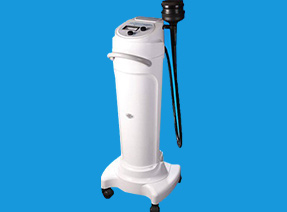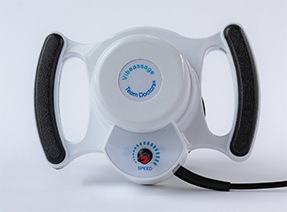THE HUMAN SPRING APPROACH TO
THORACIC OUTLET SYNDROME
by Dr James Stoxen DC., FSSEMM (hon) FWSSEM
GLOSSARY
B
Back adjustment – (chiropractic adjustment) chiropractor applying thrusts of varying speed and forces to spinal joints that are causing dysfunction and related pain. The purpose of spinal manipulation is to restore joint mobility by manually applying a controlled force into joints that have become hypomobile – or restricted in their movement – as a result of a tissue injury. balance – an even distribution of weight enabling someone or something to remain upright and steady.
balance control – in biomechanics, balance control is an ability to maintain the line of gravity of a body within the base of support with minimal postural sway.
balloon angioplasty – surgical widening of a blocked or narrowed blood vessel, especially a coronary artery, by means of a balloon catheter.
balloon venoplasty – balloon venoplasty is a procedure that involves inserting an inflatable balloon to widen your veins and improve blood flow.
bedsores (pressure ulcers, decubitus ulcers) — are injuries to skin and underlying tissue resulting from prolonged pressure on the skin. Bedsores most often develop on skin that covers bony areas of the body, such as the heels, ankles, hips and tailbone.
benzodiazepine – muscle relaxant drug used to relax muscle spasms that exacerbate thoracic outlet syndrome.
biceps short head muscle – extending from its origin on the coracoid process of the shoulder, the tendon of the short head of the biceps muscle runs adjacent to the tendon of the coracobrachialis as the conjoint tendon.
bilateral thoracic outlet syndrome – thoracic outlet syndrome that is on both the right and left side.
bioengineering – the use of artificial tissues, or components to replace damaged or absent parts of the body, such as artificial limbs.
biomechanical engineering – a bioengineering subdiscipline, which applies principles of mechanical engineering to biological systems and stems from the scientific discipline of biomechanics.
biomechanical overloading – elevated subfascial or intramuscular pressure during exercise causes tissue hypoxia and subsequent ischemic pain due to decreased blood flow.
biomechanics – the study of the mechanical laws relating to the movement or structure of living organisms.
biopsy – an examination of tissue removed from a living body to discover the presence, cause, or extent of a disease.
biped – a living thing that uses two legs for walking.
bladder incontinence – urinary (or bladder) incontinence happens when you are not able to keep urine from leaking out of your urethra.
blood clot (thrombosis) – a clump of blood that has changed from a liquid to a gel-like or semisolid state.
blood vessel reconstruction – if an artery or vein is blocked or damaged, a vascular surgeon may replace the damaged section with a new vessel, known as a graft; a graft can be either synthetic or tissue. Sometimes the graft is created from a human blood vessel, either from a donor or from elsewhere in the patient’s body.
body mechanics – exercises designed to improve posture, coordination, and stamina.
bodywork – therapies and techniques in complementary medicine that involve touching or manipulating the body.
bone pain – pain in the bone
bone setting – the practice of practiced various forms of spine or skeletal manipulation.
bone spurs – bony projections that develop along the edges of bones.
bony regeneration – the process of renewal, restoration, and growth of new bone tissue.
Borelli Award – an award given by The American Society of Biomechanics that honors an individual for their contributions to the field of biomechanics.
boring pain – a sensation as of being pierced with a long, slender, twisting object felt deep within the body.
Botox – a drug prepared from the bacterial toxin botulin, used medically to treat certain muscular conditions and cosmetically to remove wrinkles by temporarily paralyzing facial muscles.
Botulinum toxin (Botox) (BTX) – (BTX) is a neurotoxin protein produced by the bacterium Clostridium botulinum. It acts by preventing the release of the neurotransmitter acetylcholine from nerve endings preventing muscle contraction causing flaccid paralysis.
bouncing gaits – a stout, strong, springy walk
bowel incontinence – is a lack of control over defecation, leading to involuntary loss of bowel contents—including flatus (gas), liquid stool elements and mucus, or solid feces.
Bowen technique – a holistic remedial body technique that works on the soft connective tissue (fascia) of the body.
brachial neuritis – a form of peripheral neuropathy that affects the chest, shoulder, arm and hand. Patients usually have arm pain from the neck down.
brachial plexitis is a condition characterized by acute onset of shoulder pain followed by weakness and/or sensory loss of the shoulder and/or upper extremity.
brachial plexopathy – is a disorder affecting a network of nerves, blood vessels, or lymph vessels
brachial plexus – (thoracic plexus) a network of nerves located in the neck and axilla, composed of the anterior branches of the lower four cervical and first two thoracic spinal nerves and supplying the chest, shoulder, and arm. Its usually arm & neck pain.
brachial plexus compression syndrome – a syndrome characterized by compression of the brachial plexus nerves
brachial plexus dysfunction – a peripheral neuropathy caused by damage to the brachial plexus. When the brachial plexus nerves get compressed you end up with brachial plexus injury symptoms such as numbness, tingling and a loss of strength in the upper extremity
brachial plexus injury (brachial plexus injuries)– an injury to the network of nerves network of nerves located in the neck and axilla, composed of the anterior branches of the lower four cervical and first two thoracic spinal nerves and supplying the chest, shoulder, and arm.
brachial plexus nerves – network of nerves located in the neck and axilla, composed of the anterior branches of the lower four cervical and first two thoracic spinal nerves and supplying the chest, shoulder, and arm.
brachial plexus neuritis – an uncommon disorder characterized by severe shoulder and upper arm pain followed by marked upper arm weakness.
brachial plexus neuropathy – is a type of peripheral neuropathy, which refers to damage to a single nerve or a set of nerves in the neck. If you have BPN, it’s the brachial plexus that’s damaged.
brachial plexus surgery – surgery to remove the compression on the brachial plexus
bradykinin – a compound released in the blood in some circumstances that causes contraction of smooth muscle and dilation of blood vessels.
brain patterning (neural development) – refers to the processes that generate, shape, and reshapes the nervous system of animals, from the earliest stages of embryogenesis to adulthood.
brain pulse-waves – our brain is made up of billions of brain cells called neurons, which use electricity to communicate with each other. The combination of millions of neurons sending signals at once produces an enormous amount of electrical activity in the brain, which can be detected using sensitive medical equipment (such as an EEG), measuring electricity levels over areas of the scalp. The combination of electrical activity of the brain is commonly called a Brainwave pattern, because of its cyclic, ‘wave-like’ nature.
brain shivers – brain shivers can be described as one of the unusual withdrawal symptoms that a person experiences, after going through a prolonged use of antidepressants.
brain shocks – are commonly reported electrical shock sensations that are often experienced during discontinuation of antidepressant medications. Other common names for brain shocks include: brain shivers, zaps, and brain shocks.
brain zaps – are commonly reported electrical shock sensations that are often experienced during discontinuation of antidepressant medications. Other common names for brain zaps include: brain shivers, electrical shocks, and brain shocks.
breast augmentation (augmentation mammoplasty) – artificial enlargement of the breasts. This procedure may be done by insertion of a silicone bag (prosthesis) under the breast (submammary) or under the breast and chest muscle (subpectoral), after which the bag is filled with saline solution. This prosthesis expands the breast area to give the appearance of a fuller breast (increased cup size).
breast hypertrophy – breast hypertrophy is a rare medical condition of the breast connective tissues in which the breasts become excessively large.
breast reduction – breast reduction. Reduction mammoplasty (also breast reduction and reduction mammoplasty) is the plastic surgery procedure for reducing the size of large breasts.
BTX (Botox) (Botulinum toxin) – (BTX) is a neurotoxin protein produced by the bacterium Clostridium botulinum. It acts by preventing the release of the neurotransmitter acetylcholine from nerve endings preventing muscle contraction causing flaccid paralysis.
bulged disc – when the connecting part between the vertebra bulges or protrudes.
Bupivacaine – a powerful local anesthetic.

Meet Dr James Stoxen DC., FSSEMM (hon)
President, Team Doctors® Masters Academy
www.drstoxen.com
Dr Stoxen’s Curriculum Vitae
Stay connected to our thoracic outlet syndrome social media sites
1.1k
Members

READ THESE CHAPTERS OF DR STOXENS BOOK FREE HERE!
ARTICLE CATEGORIES
- Testimonials (13)
- Success Stories (13)
- Failed TOS Surgery (1)
- Thoracic Outlet Syndrome (11)
- Compartment Syndrome – Forearm (5)
- Shoulder Replacement Surgery (1)
- Cervical Discectomy (1)
- Cervical Fusion Surgery (1)
- What is TOS? (3)
- Thoracic Outlet Anatomy (1)
- Thoracic Outlet Engineering (1)
- Causes Of TOS (6)
- The TOS Examination (1)
- Diagnostic Tests for TOS (1)
- What Mimics TOS? (1)
- Paget-Schroetter Syndrome (2)
- TOS Surgery (2)
- Posture Tips (1)
- Self Treatment (1)
- What doesn’t work and why? (1)
- What works and why? (1)
- Stretches for TOS (1)
- Exercises for TOS (1)
- Surgery for TOS (1)
- Case Studies (2)
- Chapter Reviews (10)
- Uncategorized (16)
VIDEO TUTORIALS
Subscribe to our newsletter
Team Doctors® Master’s Academy
Professional Development Courses
Launching January 1, 2022!
Team Doctors® Master’s Academy
Patient Self-Care Workshops
Launching January 1, 2022!


















